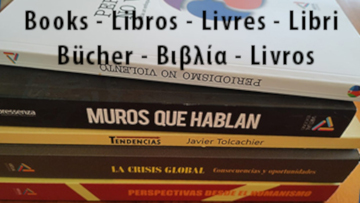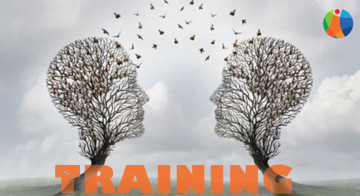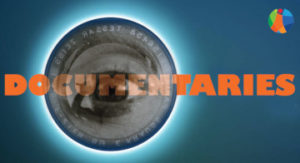Pressenza previously reported on the right-livelihood being given to Alyn Ware. Here is the text of his acceptance speech.
**Embracing Indra’s Web: The Right Livelihood Award in the 21st Century**
A Vedic myth tells about the god Indra who has a web – or net – that stretches out infinitely in all directions. There is a single glittering jewel in each “eye” of the net – in some versions of the myth it is a glistening dew-drop in each intersection of the web – and since the web is infinite in dimension, the jewels are infinite in number. There hang the jewels, glittering like stars.
If we select one of these jewels – or dew-drops – for inspection and look closely at it, we will discover that in its surface there are reflected in detail the jewels surrounding it – and also reflected (though in less detail) all the other jewels in the net, infinite in number. Not only that, but each of the jewels reflected in this one jewel is also reflecting other jewels, so that there is an infinite reflecting process occurring.
In the past this mythical image was perhaps more philosophical and poetic than an accurate description of the physical world. However, more and more we realize that life has become like this web. The world-wide-web (inter-net), global financial network, rise in international organizations like the United Nations and all its bodies, and even the photo from outer space showing the earth as one interconnected planet – are all manifestations of this reality – that we are living in an interconnected world where links can be made from one part of the web to any other in an instance.
Each of us – each of you – is a jewel in this web – connected directly to our neighbours and to those far and beyond. By ourselves we are but one dew-drop in an infinite universe, but when we open to our connections – when we actively reflect and relate to others – we become much more.
The Right Livelihood Award is about celebrating this web – and about making it work even more effectively for peace, justice and a sustainable world. I am honoured to be one of the jewels selected for inspection – and hopefully in me you see the reflection of the hopes and dreams and visions and hard work of so many people around the world.
I feel blessed to have been able to work with people from around the globe – from Afghanistan to Zimbabwe – and from so many walks of life – from children in kindergarten to world leaders, from teachers in the classroom to United Nations ambassadors, from grass-roots activists to Nobel Peace laureates. My optimism for humanity comes from meeting so many people, nearly all of whom are quiet but effective peacemakers in their homes, schools and communities and who support peace and justice in the wider world.
Watching the plethora of violence in the media can give the wrong impression that humanity is doomed to a hellish existence of violence and force. But this is an inaccurate impression. Most of the world’s six and a half billion people are living in peace – solving their conflicts with respect and diligence. It is a minority who are spoiling it for the rest.
But this minority is powerful. They have commandeered an obscenely excessive portion of the global economic pie – $1.4 trillion per year – for their war system. They spend millions on promoting their warped view that guns and bombs and weapons of mass destruction are required for our security. They put up barriers to peace that we must tear down – walls of fear, walls making arbitrary divisions between young and old and between people of different religions or ethnicities or nations, walls that hide the common humanity that we all share. Walls that justify poverty as if the poor deserved to be oppressed. Walls of weapons that cut us off from each other and perpetuate the myth that force provides security. Walls that hide the beauty of those other jewels in the universal web.
The beauty in the new global web is that, in strengthening our multiple connections, we can get around the walls, over the walls and collectively chip away to finally tear down these walls.
I came into this work as a result of one of the most terrifying of these walls – the threat of annihilation from nuclear weapons. My ambition when I was 9 years old was to be a physicist. My heroes were Ernest Rutherford – the New Zealander who split the atom – and Albert Einstein who produced the formula that predicted the energy in an atom – E=MC2. But then I learnt about the devastating effects of nuclear weapons – in Hiroshima and Nagasaki and also in the Pacific Islands where atmospheric testing has destroyed whole islands and given rise to horrific cases of deformed babies, cancers and other health effects.
I also learned about the bravery of people who sailed from New Zealand to Moruroa directly into the blast zone at great risk to their lives to protest against the testing – and these tiny yachts with a few brave individuals managed to stop the colossal power of the bomb and shift the political weight of the nuclear weapons powers to finally end atmospheric testing in the Pacific in 1975. To me this was like David battling Goliath with non-violence and winning…
However, despite the peace movement’s success in ending atmospheric testing, the nuclear arms race escalated into the 1980s. As a kindergarten teacher preparing children for their future, I could not turn a blind eye to the fact that they might not have a future – and that the existential threat from nuclear weapons warped even their present. If I truly cared about the children I was teaching, I had to act to ensure there was a future for them.
Using the philosophy “Think Global – Act Local” I looked for ways to campaign in Aotearoa-New Zealand for a nuclear-weapons-free world. The idea of local nuclear-weapon-free zones was starting to take off. I worked to make my teachers’ college, university and city a nuclear-weapon-free zone. By 1984, when a Labour government led by David Lange was elected into power, nearly 70% of New Zealanders lived in cities or regions that had been declared to be nuclear-weapon-free zones. Prime Minister Lange, later a Right Livelihood Laureate, thus implemented a nuclear-weapons-free policy by informing the Nuclear Weapon States that they could no longer bring nuclear weapons to New Zealand on their naval vessels.
As such New Zealand was one of the first countries to come out from under the nuclear umbrella – the so-called ‘protection’ of our country through the extended nuclear deterrence policies of our principal ally the United States.
It was not an easy move. New Zealanders were split about 50/50 – half believed fervently that nuclear weapons were required to protect us from large military powers like the USSR. Many of these remembered how close we had come to being over-run by the Japanese during the second world war – and they believed that it was the nuclear bomb which halted Japan in its tracks.
New Zealand also faced incredible pressure from the governments of our allies – Australia, France, the UK and the United States – to continue supporting nuclear deterrence and not to let the Western Alliance down. This pressure included trade threats, scare-mongering including false reports of Soviet submarines in the region, suspension of military and diplomatic privileges, and even a terrorist act by the French government using limpet mines to sink a peace boat in one of our harbours and killing a crew-member in the process.
We overcame this pressure with the help of friends around the world. Former CIA and FBI agents warned us of the types of dirty tricks that would likely be played against us so we were forewarned and could deal with them. Women’s groups in the United States set up girl-cott campaigns to counter the trade threats against us from the US government (a girl-cott is the opposite of a boycott. US citizens actively shopped for NZ nuclear-free cheese or nuclear-free kiwifruit to support us).
The New Zealand success gives me hope for the achievement of a nuclear-weapons-free world. It was ordinary people who brought about the change in New Zealand’s policy – ordinary people who recognized that it is morally repugnant to threaten to use nuclear weapons against those who do not have them, and it is suicidal to threaten to use them against those who do have them. In fact, there is no way to use nuclear weapons which would not violate innocent people and creation itself. If we in New Zealand were able to act on this truth to secure a new government policy, and end an illusory addiction to nuclear weapons, then others can too.
In the 21st century we have the advantage that we can act both locally and globally – we can prohibit nuclear weapons in our own neighbourhoods, countries or regions – at the same time as promoting the global abolition of nuclear weapons through a negotiated treaty – a nuclear weapons convention (NWC). A draft of such a treaty (Model NWC) has been circulated by UN Secretary-General Ban Ki-moon as a guide to such negotiations. It outlines the legal, technical and political elements to achieve and maintain a nuclear-weapons free world.
The Model NWC has helped shift the abolition of nuclear weapons from being merely an ideal – to being a practical process with a clear framework for success. Global communications enable us all to become directly engaged to make this happen. Each of us can go online and access the Model NWC, and the UN Secretary-General’s plan which advances the convention, and also the United Nations resolutions calling for the start of negotiations. We can contact our governments to encourage them to support the start of negotiations. If they are hesitant, we can call on our parliamentarians to push them along – or even our mayors, over 3000 of which have joined the global call for a nuclear weapons convention.
We have an historic opportunity provided by President Obama who has put forward a vision for a nuclear-weapons-free world, and has started a process to get there. It is true that President Obama has not yet joined Mr Ban Ki-moon in specifically promoting a NWC. Perhaps he first needs to achieve success with Russia on stockpile reductions, and with his own senate on ratifying the Comprehensive Test Ban Treaty. But we don’t have to wait. We can support President Obama’s vision by starting work on a Nuclear Weapons Convention now. As with the Landmines Convention and the Cluster Munitions Convention, like-minded governments and civil society can start the deliberations and negotiations on a NWC – a move that would put pressure on the other countries to join.
There is some truth to the argument that nuclear weapons are in a field of their own… and that Nuclear Weapon States might not sign on to a nuclear abolition treaty unless all the others do so as well. However, even if this is true, this does not have to prevent the negotiations from beginning. Countries can negotiate a treaty but still retain the right to not ratify it, or to ensure that it does not enter-into-force, unless other Nuclear Weapon States or potential Nuclear Weapon States also ratify. I take this opportunity to thank the Right Livelihood Foundation for coming to the realization that the time is ripe for a global effort for a nuclear weapons convention – and to thus make this award to help in its fruition.
In concluding, I would like to return to Indra’s web. I have spoken mostly about the wall of nuclear weapons and the political processes for tearing down this wall. I did not have time to speak about other processes – most importantly that of peace and disarmament education – which I believe is the most important tool for breaking down walls and replacing them with understanding, respect and mutually beneficial relationships.
Peace education can be very simple. It can involve an exploration of the costs of violence at home, school or in the world, versus the benefits of finding win-win solutions to conflicts. Or it can be very detailed, involving analysis of root causes of conflict and the development of solutions that deal with a myriad of factors. The key is to ensure that our people of all ages are given opportunities to study and develop the skills in peace. I can testify that children are especially eager to learn, and quick to use these skills. My daughter surprised me by initiating a conflict resolution role-play when she was only 3. Since then I have seen six-year olds in our programmes successfully mediating conflicts at school, and teenagers demonstrating better conflict resolution, mediation and advocacy skills than me.
Finally, I would like to briefly mention one other major threat to our global web: climate change – and I commend the Right Livelihood Foundation for making an honorary award to David Suzuki for his work in this area. I will comment on just one of Dr Suzuki’s many important suggestions, the one which could provide the single most effective way for individuals to significantly reduce their carbon footprint and also to contribute towards ending world hunger.
In 2006 the UN Food and Agricultural Organisation reported that the global livestock industry generates more greenhouse gas emissions than all the cars, trucks and airplanes in the world combined. Dr Rajendra Pachauri, head of the United Nations Intergovernmental Climate Change Panel, says that changing diet from meat to plant-based would be of greater effect than, for example, changing to a hybrid car.
Right Livelihood Award Laureate Frances More Lappe in Diet for a Small Planet explains that meat-eating deprives the world’s population of needed food. It takes nearly 20 times more land to produce meat than it does for the equivalent protein substance from food crops. In addition, millions of tons of grain which could be used to feed people are instead fed to cattle.
I originally changed from eating meat to being vegetarian because I could not stomach the violence of killing animals. I felt then that my decision was purely a personal one. Now, I see that diet-change is essential to a sustainable world and is thus intricately linked to peace and justice. I commend the Right Livelihood Award Foundation for making this dinner a vegetarian one, and the government of Sweden for giving the Swedish public advice on the carbon footprint of their food, which is now included on some food labelling.
I encourage us all to adopt and promote a peaceful and ethical diet as we are tearing down the walls of violence and restoring Indra’s web to its full glory.
Thank you





